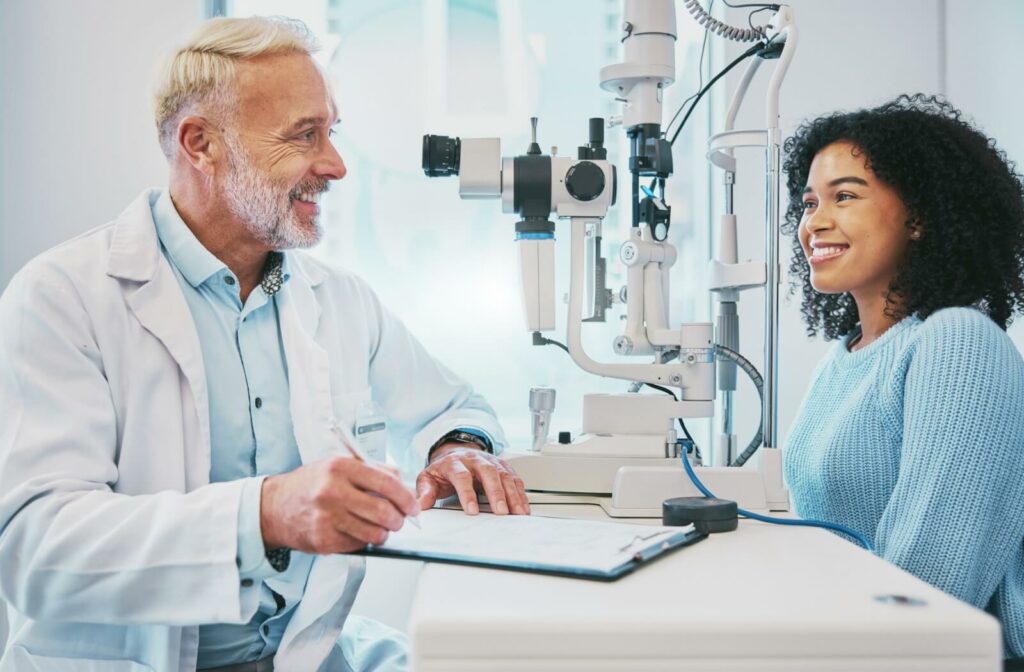All Categories
Featured
Table of Contents

Routine eye assessments are vital for preserving good vision and finding prospective eye health concerns early. However, the frequency of these examinations can vary substantially based upon an individual's age, way of living, and overall wellness. Understanding the advised routine for eye examinations can aid make certain that people of every ages obtain ideal treatment and tracking for their eye health.
Newborns and Toddlers (0-2 Years)
For toddlers and infants, eye tests are crucial for finding any kind of potential vision problems beforehand. The American Academy of Ophthalmology suggests that a child's initial eye examination must occur at around 6 months of age. Throughout this first see, the eye care expert will certainly evaluate the youngster's visual growth and check for any kind of noticeable eye problems.Following this initial examination, it is advised that youngsters have an additional eye exam at age 3. This check out will concentrate on analyzing the child's total aesthetic function, including eye positioning and the capability to track things. If no issues are discovered, the following exam needs to be arranged before the child starts college, usually around age 5 or 6.
School-Aged Youngsters (6-18 Years)
Once kids get to school-age child, normal eye examinations ought to be scheduled every one to two years. Vision is essential for discovering and growth, and many institutions perform vision testings. Nonetheless, these testings do not change a thorough eye exam by an eye treatment expert.For children involved in activities or sports needing considerable visual focus, yearly eye exams might be suggested. In addition, if a kid exhibits indications of vision troubles-- such as problem reviewing, squinting, or regular headaches-- a browse through to the eye medical professional should be scheduled asap.
Young Person (19-39 Years)
Young person typically have less vision adjustments than older age teams, but normal eye exams continue to be essential. The general referral is to set up an eye test every 2 years throughout this period. Nevertheless, people with particular risk elements-- such as a family members background of eye condition, diabetic issues, or those that wear contact lenses-- must take into consideration annual eye exams.Additionally, those who invest significant time on electronic devices might experience digital eye pressure. If signs such as dry skin, tiredness, or blurred vision happen, it may be a good idea to see an eye care expert sooner.
Adults (40-64 Years)
As people enter midlife, the chance of establishing vision problems boosts. Adults aged 40 to 64 must set up eye tests every one to two years. This age may begin to experience presbyopia, a natural age-related problem that makes it testing to concentrate on close items. Eye examinations can additionally aid find various other common age-related problems such as glaucoma, cataracts, and macular degeneration.If people in this age group have threat elements such as hypertension or diabetes mellitus, they may call for even more frequent exams to check their eye health closely.
Senior Citizens (65 Years and Older)
For senior citizens, routine eye tests come to be even more essential. The American Optometric Organization advises that individuals aged 65 and older have an eye examination at least yearly. Older adults go to a higher threat for numerous eye illness, consisting of cataracts, glaucoma, and age-related macular deterioration. Early detection and treatment of these conditions can avoid vision loss and boost the lifestyle.Conclusion.
Comprehending the ideal routine for eye exams based on age is essential for preserving optimal eye health and wellness throughout life. By adhering to these guidelines and consulting with an eye treatment specialist, individuals can take positive steps toward maintaining their vision and total health.Table of Contents
Latest Posts
When to Tell When Your Car Needs Expert Auto Repair at Montclare Auto Repair
Published May 27, 25
1 min read
Discover Premier Car Repair Services offered by Montclare Auto Repair – Quality Service Today
Published May 26, 25
1 min read
Enhance Your Building with Expenses Door Solution
Published May 23, 25
1 min read
More
Latest Posts
When to Tell When Your Car Needs Expert Auto Repair at Montclare Auto Repair
Published May 27, 25
1 min read
Discover Premier Car Repair Services offered by Montclare Auto Repair – Quality Service Today
Published May 26, 25
1 min read
Enhance Your Building with Expenses Door Solution
Published May 23, 25
1 min read